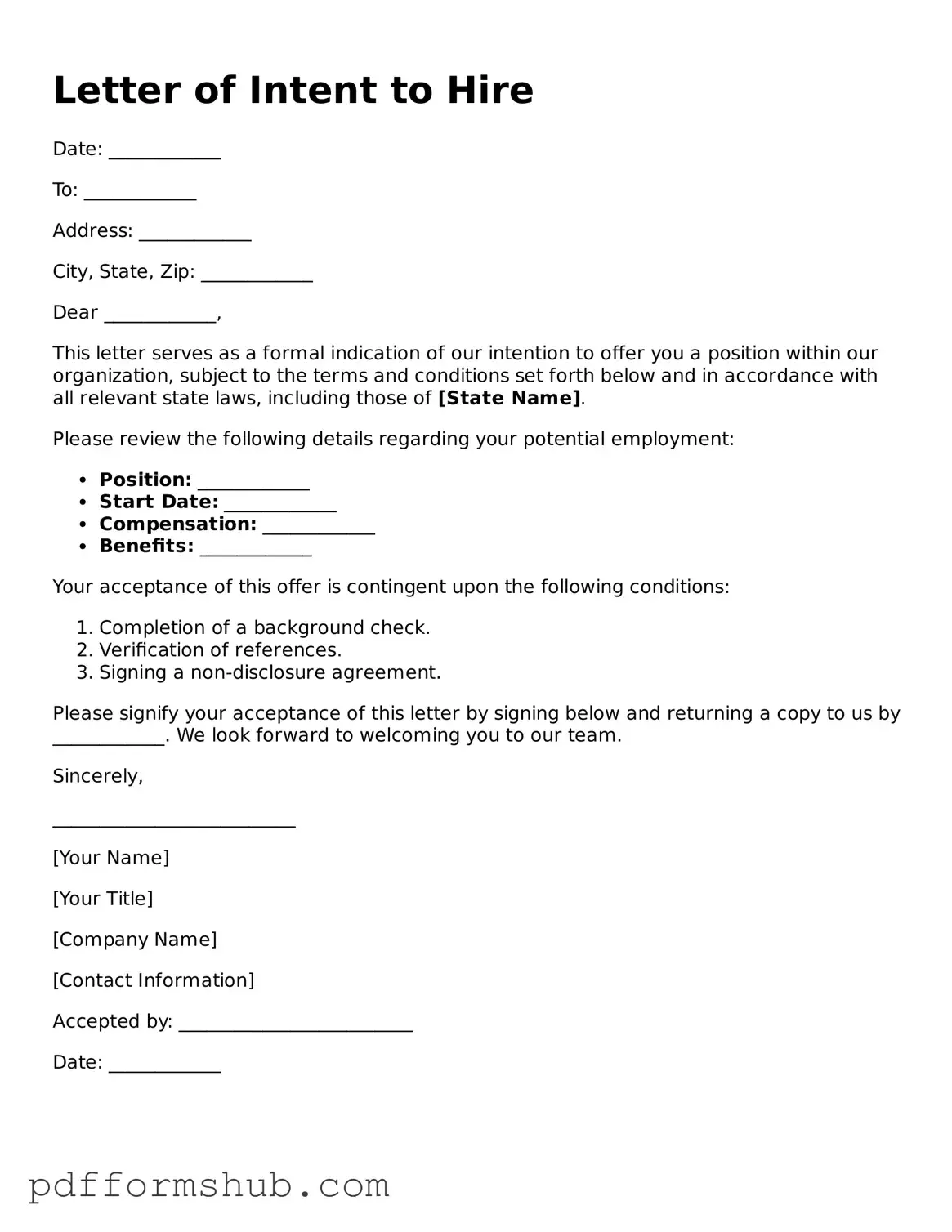When considering a new job opportunity, candidates often encounter a crucial document known as the Letter of Intent to Hire. This form serves as a preliminary agreement between the employer and the prospective employee, outlining the key terms of employment before the final contract is drafted. It typically includes important details such as the job title, salary, start date, and any conditions that must be met prior to employment. By providing a clear framework, this letter helps both parties understand their expectations and commitments. Additionally, it can be a vital tool for employers to secure top talent, as it demonstrates professionalism and a commitment to transparency. For job seekers, it represents a significant step towards their career goals, offering a glimpse into the company culture and the role they are about to embark on. Understanding the nuances of this document can empower candidates to negotiate terms that align with their aspirations and ensure a smooth transition into their new position.
